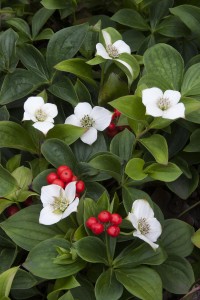 I have always wanted an arboretum. The world is full of beautiful trees and woody plants and if someone were to hand me a few extra acres—say 50 or so—I would grow more of them. Right now, as the great spring flowering continues to unfold; I feel the lack of an arboretum most keenly. I see the cascades of fragrant white flowers on the black locusts, or Robinia pseudoacacia, and imagine them outside my bedroom window. I would happily grow at least 20 kinds of magnolia, not to mention ornamental cherries. For later in the summer, I would plant the beautiful native Franklinia alatamaha or Franklinia tree, as well as the elegant, camellia-flowered Japanese stewartia, known botanically as Stewartia pseudocamellia. And, of course, I would want a Persian ironwood tree or Parrotia persica for its incomparable autumn color
I have always wanted an arboretum. The world is full of beautiful trees and woody plants and if someone were to hand me a few extra acres—say 50 or so—I would grow more of them. Right now, as the great spring flowering continues to unfold; I feel the lack of an arboretum most keenly. I see the cascades of fragrant white flowers on the black locusts, or Robinia pseudoacacia, and imagine them outside my bedroom window. I would happily grow at least 20 kinds of magnolia, not to mention ornamental cherries. For later in the summer, I would plant the beautiful native Franklinia alatamaha or Franklinia tree, as well as the elegant, camellia-flowered Japanese stewartia, known botanically as Stewartia pseudocamellia. And, of course, I would want a Persian ironwood tree or Parrotia persica for its incomparable autumn color
Sadly, I am unlikely to become the proud owner of an arboretum—unless I win the lottery.
In the meantime, I do what I can and my suburban garden is home to numerous roses-of-Sharon, in tree and shrub forms, as well as a yellow-flowered hybrid magnolia, Magnolia ‘Elizabeth’. I take pride in my Halesia carolina or Carolina silverbell tree, which thrives in my front strip, not far from a struggling red maple.
Unless I dig up the middle of my front yard, I am out of room. That is why I was so excited on a recent garden center prowl to find bunchberry or Cornus canadensis.
Bunchberry, also known as creeping dogwood, bunchberry dogwood and dwarf cornel, is a groundcover that grows no more than eight inches tall and twelve inches wide. It is closely related to those beloved garden favorites, flowering dogwood or Cornus florida, and kousa dogwood, known botanically as Cornus kousa. The bloom time for bunchberry, in late spring or early summer, mimics that of the later flowering dogwood trees as well. In fact, the white flowers look like miniature versions of those found on Cornus florida, with each bloom consisting of four, petal-like bracts surrounding the tiny true flowers in the center. The glossy green leaves are ovoid, grouped in whorls, and attractively ridged. As with the flowering dogwood trees, bunchberries produce small clusters of red fruits in summer. The leaves turn scarlet in the fall before departing the scene.
I planted my new bunchberry in a semi-shaded spot adjacent to the silverbell tree. This mimics its native North American habitats at the shady edges of woodland areas. If my plant is happy in that situation, it will begin to spread by underground rhizomes. Bunchberry is not given to bad manners, so even if it spreads, it will not take over the front strip. The plants like somewhat cool conditions, so I am hoping that the shade will keep mine happy during the summer. I will do my part by watering consistently.
One thing that I will not do is walk on my bunchberry. Unlike some other ground covering plants, it does not take kindly to foot traffic.
If you are looking for native North American and/or habitat plants, bunchberry is your ticket. According to an article published by the Canadian Broadcasting Company, the red berries are loved by “bears, hares, and even humans.” I have not tried them, but supposedly they can be used to make jams, pies and other tasty things.
Apparently those bears and hares eat the berries but ignore the leaves. The same is reportedly true of deer. This is a definite plus in my suburban garden where we have regular visits from four-footed marauders who treat my planting scheme like an all-you-can-eat buffet. The flowers attract butterflies and other pollinators and the birds compete with the local wildlife for the berries.
I like shade plantings that form a tapestry, with a patch of variegated ajuga, snuggling up to a few blue-green hostas that are cheek by jowl with a nice pulmonaria or two. If you want to add bunchberry to your garden tapestry, your best bet is probably a good local garden center, particularly if it carries plants produced by Monrovia. White Flower Farm sells bunchberry, but it is currently out of stock there. You can sign up on their website to be notified when it returns to inventory. Find White Flower Farm at P.O. Box 50, Route 63, Litchfield, Connecticut 06759; 1-800-503-9624; www.whiteflowerfarm.com. Paper catalog available.
